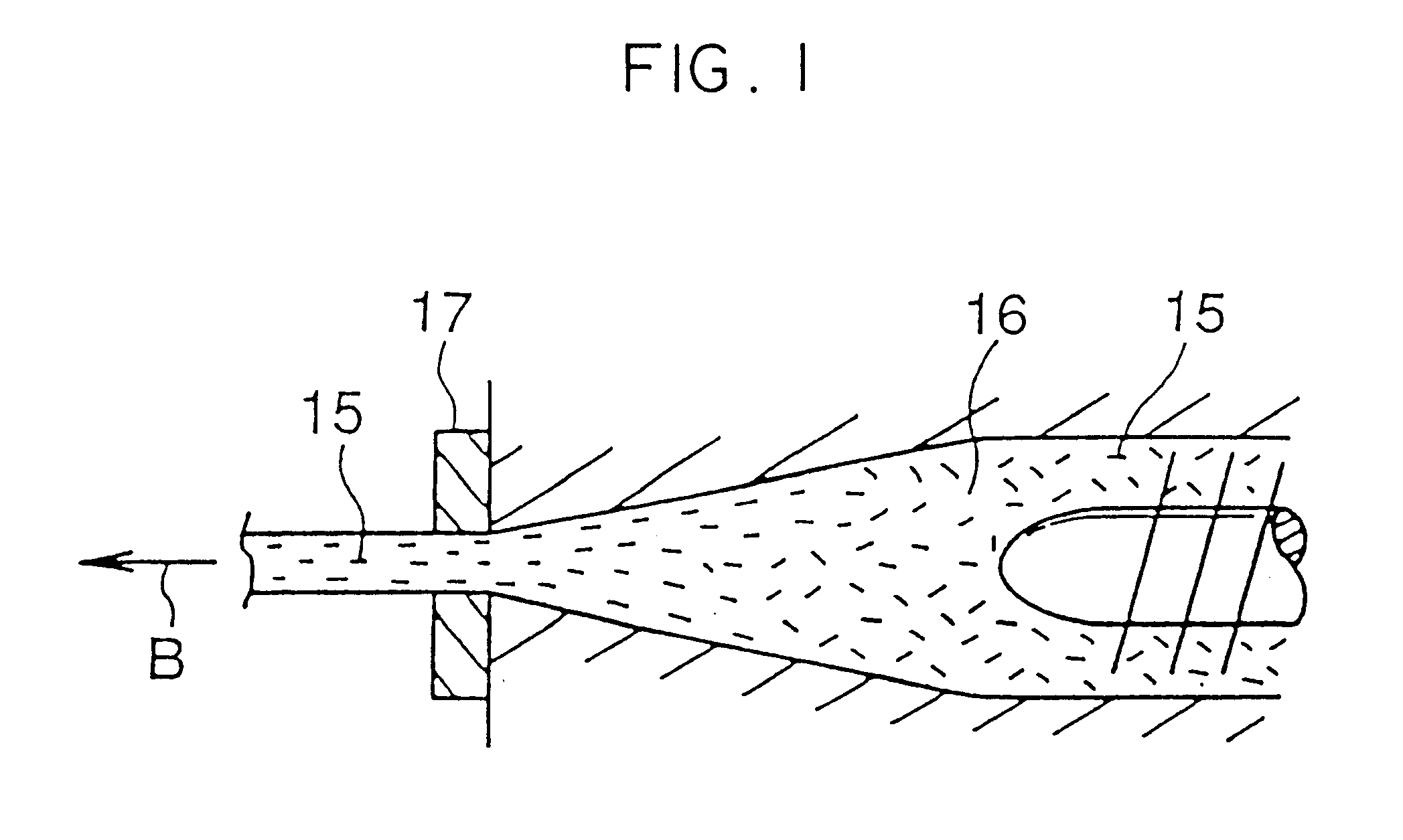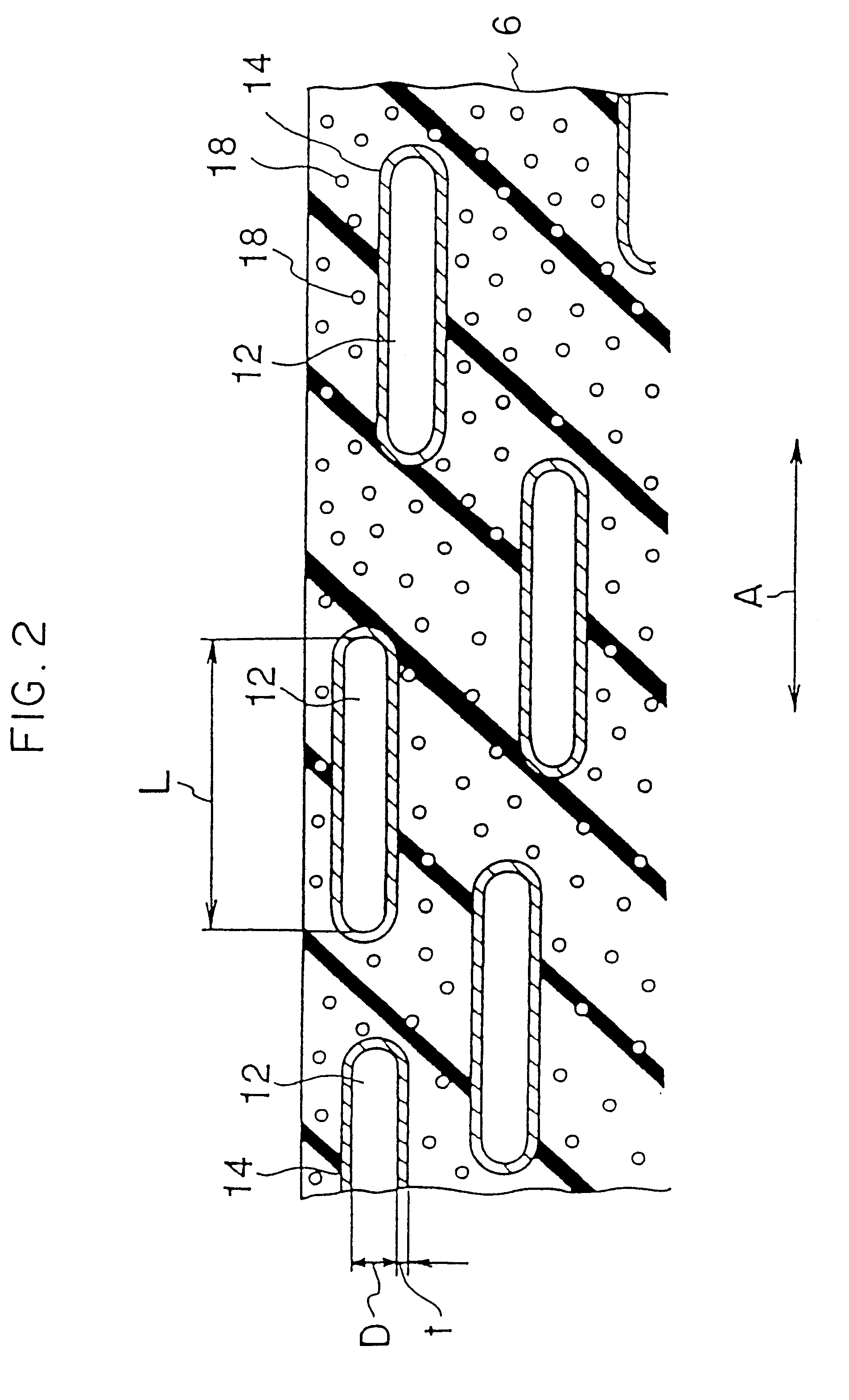Tire and vulcanized rubber including elongated cells
a technology of vulcanized rubber and cells, which is applied in the direction of non-skid devices, special tyres, transportation and packaging, etc., can solve the problems of insufficient increase in on-ice coefficient of friction, insufficient improvement of on-ice performance, and use of foamed rubber containing only independent cells
- Summary
- Abstract
- Description
- Claims
- Application Information
AI Technical Summary
Benefits of technology
Problems solved by technology
Method used
Image
Examples
Embodiment Construction
The present invention will now be explained by way of example, but is in no way limited by these examples. Examples 1-6 and Comparative Examples 1-9:
The rubber compositions shown in Table 1 were extruded in an extruder and processed. These rubber compositions were vulcanized and made into the vulcanized rubber of tread. Under conventional tire manufacturing conditions and according to conventional practice 185 / 70R14 size passenger vehicle studless tires (air filled tires) were produced. The tread of these tires was formed with vulcanized rubber.
The structure of the tire is shown in FIG. 3. It consists of a pair of bead sections, a carcass 2 which extends between the pair of bead sections in a toroidal shape, a belt 3 which supports the crown section of the carcass 2, and a tread 5 to form a radial structure.
The carcass 2 is arranged in the tire at an angle of 90.degree. to the circumferential direction of the tire. The code count is 50 / 5 cm. As shown in FIG. 4, 4 blocks are arranged...
PUM
| Property | Measurement | Unit |
|---|---|---|
| Fraction | aaaaa | aaaaa |
| Percent by mass | aaaaa | aaaaa |
| Percent by mass | aaaaa | aaaaa |
Abstract
Description
Claims
Application Information
 Login to View More
Login to View More - R&D
- Intellectual Property
- Life Sciences
- Materials
- Tech Scout
- Unparalleled Data Quality
- Higher Quality Content
- 60% Fewer Hallucinations
Browse by: Latest US Patents, China's latest patents, Technical Efficacy Thesaurus, Application Domain, Technology Topic, Popular Technical Reports.
© 2025 PatSnap. All rights reserved.Legal|Privacy policy|Modern Slavery Act Transparency Statement|Sitemap|About US| Contact US: help@patsnap.com



